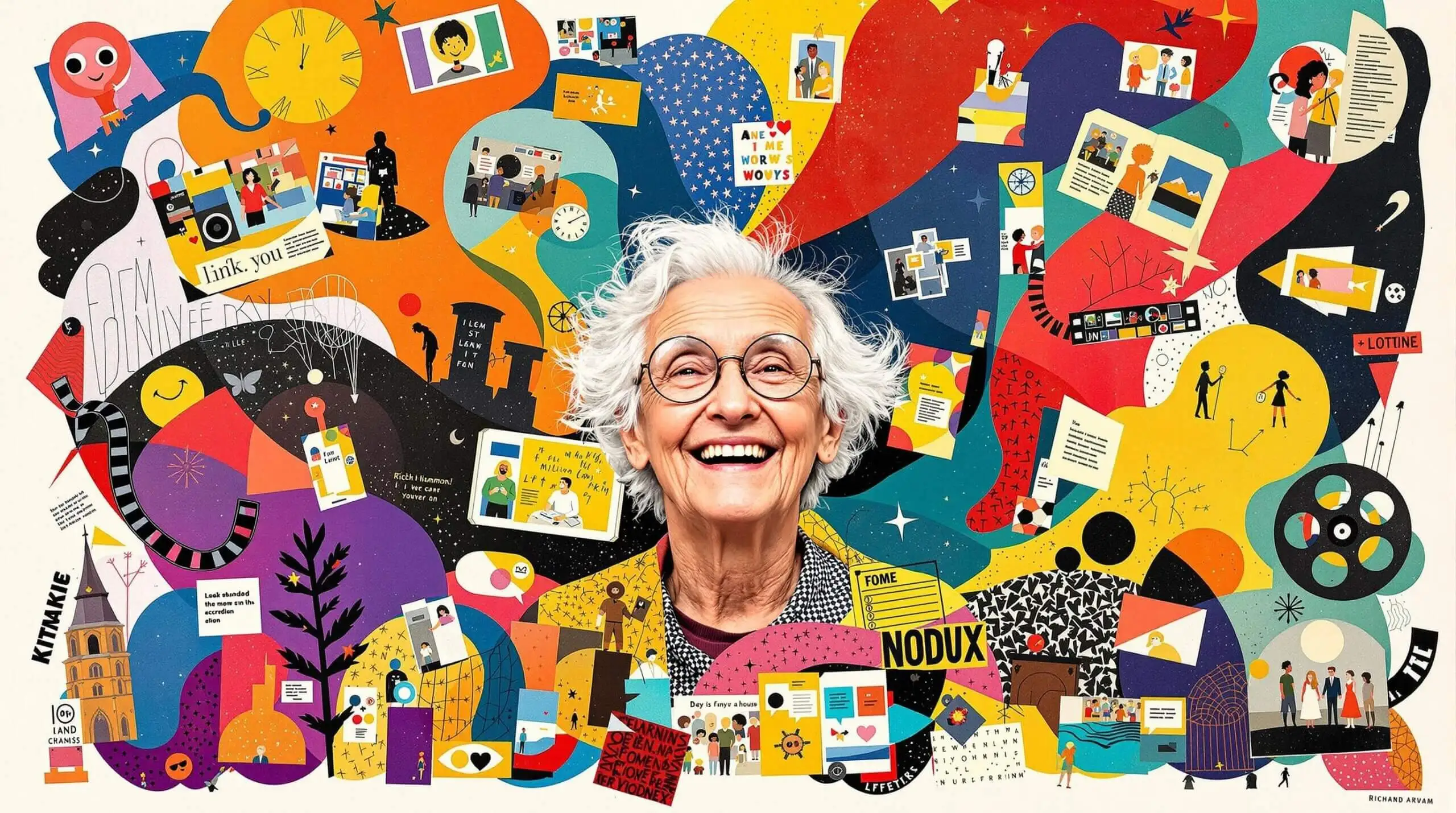The Aging Antidote: How Storytelling Preserves Youth
Explore the powerful role of storytelling in maintaining youthfulness and combating the signs of aging.

Understanding Storytelling and Its Impact on Aging
The Ancient Connection Between Stories and Youth
Stories have been preserving human vitality since our ancestors gathered around fires. Modern science now confirms what cultures worldwide have known for millennia – storytelling actually changes our brains and bodies in ways that can slow aging. From reduced stress hormones to improved cognitive function, the simple act of sharing stories packs a powerful anti-aging punch.
The Science of Stories and Cellular Health
When we engage with stories, our brains release a cocktail of beneficial chemicals. Oxytocin, often called the “bonding hormone,” increases during storytelling and has been linked to reduced inflammation – a key factor in aging. Meanwhile, dopamine and serotonin levels rise, creating natural stress relief that directly impacts our cellular health. Research shows that lower stress levels correlate with longer telomeres, those protective caps on our DNA that indicate biological age.
Origins of Narrative Medicine
The medical world started taking storytelling seriously in the 1990s. Columbia University’s program in Narrative Medicine pioneered the research showing how personal narratives influence healing. Studies revealed that patients who regularly shared their stories showed improved immune function and faster recovery rates. The cognitive engagement required for storytelling creates new neural pathways, effectively keeping our brains younger.
Common Myths About Aging and Mental Activity
Many believe cognitive decline is inevitable with age. However, research shows that regular storytelling – whether sharing personal tales or engaging with fiction – can maintain and even improve mental function. Another misconception is that only writing or telling stories counts. In fact, actively listening to stories provides many of the same benefits, making this anti-aging tool accessible to everyone.
Research and Statistics
The numbers paint a compelling picture. Studies show that older adults who regularly engage in storytelling activities have 63% better memory retention than their peers. Social storytelling groups demonstrate a 44% reduction in feelings of isolation, which itself is linked to accelerated aging. Research from Harvard Medical School indicates that regular narrative engagement can improve cognitive function by up to 26% in adults over 65.

Modern Applications of Storytelling for Longevity
Digital Storytelling and Brain Health
Technology has created new ways to harness storytelling’s benefits. Virtual storytelling communities, digital memoir platforms, and story-based apps provide accessible tools for daily narrative engagement. These platforms combine social connection with cognitive exercise, creating a powerful anti-aging double punch. Studies show that digital storytelling participants show improved memory and processing speed within just three months.
The Role of Different Story Types
Personal narratives, fiction, and even joke-telling all contribute to longevity differently. Personal stories strengthen autobiographical memory and sense of identity. Fiction enhances empathy and emotional regulation. Humor narratives boost immune function through positive emotion. This variety of benefits makes storytelling a versatile tool in the anti-aging toolkit.
Biological Mechanisms of Narrative Engagement
Neural Plasticity and Story Processing
Each time we engage with stories, our brains create new neural connections. This process of neuroplasticity becomes increasingly important as we age. Story engagement activates multiple brain regions simultaneously, creating a mental workout that strengthens cognitive reserves. Recent studies show that regular storytelling activities can increase brain volume in areas typically affected by aging.
Hormonal Changes During Narrative Exchange
Storytelling triggers beneficial hormonal shifts. Cortisol levels drop during story sharing, reducing chronic stress that accelerates aging. Growth hormone production increases, supporting cellular repair. These hormonal changes create an internal environment that supports healthy aging at the molecular level.
Key Areas of Impact
Social connection through storytelling reduces inflammation markers in the blood. Memory consolidation improves through regular narrative recall. Executive function benefits from the planning and organization required in storytelling. Sleep quality often improves when storytelling becomes part of evening routines, supporting cellular repair processes.
Practical Ways to Incorporate Storytelling for Longevity
- Join or start a story circle in your community
- Write in a journal for 15 minutes daily
- Share family histories with younger generations
- Participate in online storytelling forums
- Take a creative writing class
- Record voice memoirs
- Read fiction aloud with others
- Create digital story albums
- Practice storytelling meditation
- Engage in narrative therapy sessions
The Future of Narrative Medicine and Longevity
Scientific research continues to uncover new connections between storytelling and aging. Artificial intelligence is being developed to analyze personal narratives for early signs of cognitive change. Virtual reality storytelling environments show promise in creating immersive experiences that maximize brain-protective benefits.
Optimizing Story Engagement for Maximum Benefits
Timing and Frequency
Research indicates that daily story engagement provides optimal benefits. Morning storytelling sessions can improve cognitive function throughout the day. Evening narrative practices support better sleep quality. The key is consistency – regular storytelling activities show more significant anti-aging effects than sporadic engagement.
Social Versus Solo Practice
While both individual and group storytelling offer benefits, social story sharing provides additional advantages. Group narrative activities increase oxytocin production, enhance emotional regulation, and strengthen social bonds. These social connections create a protective effect against age-related decline.
Measuring the Impact of Storytelling on Aging
Biological Markers
Scientists track several indicators to measure storytelling’s anti-aging effects. Telomere length, inflammation markers, and stress hormone levels all show improvement with regular narrative engagement. Brain imaging reveals increased activity in regions associated with memory and emotional processing.
Cognitive Assessments
Standard cognitive tests demonstrate measurable improvements in regular storytellers. Memory recall, verbal fluency, and problem-solving abilities show particular enhancement. Long-term studies indicate that consistent storytelling engagement can delay cognitive decline by up to five years.
Creating a Personal Storytelling Practice
Getting Started
Begin with five minutes of daily story writing or sharing. Focus on personal experiences, family histories, or creative fiction. Use prompts if needed, but allow natural narrative flow. Record progress and noticed benefits to maintain motivation.
Building Consistency
Establish regular storytelling routines. Connect with others who share this interest. Set achievable goals for story creation or sharing. Celebrate small wins and document improvements in memory, mood, and social connection.
Advanced Storytelling Techniques for Enhanced Benefits
- Incorporate sensory details to enhance memory formation
- Practice emotional storytelling for hormonal balance
- Use metaphor and symbolism to strengthen neural connections
- Combine movement with storytelling for physical benefits
- Experiment with different narrative perspectives
- Create story maps for complex narratives
- Practice active listening during story exchanges
- Use technology to enhance story preservation
- Integrate cultural traditions into personal narratives
- Develop character voices for creative expression
Storytelling offers a powerful, accessible tool for maintaining youth and vitality. The combination of cognitive engagement, social connection, and emotional expression creates a holistic approach to aging well. By incorporating regular narrative practices into daily life, we can harness these benefits for enhanced longevity and life quality. The science is clear – stories don’t just enrich our lives; they help preserve our youth.